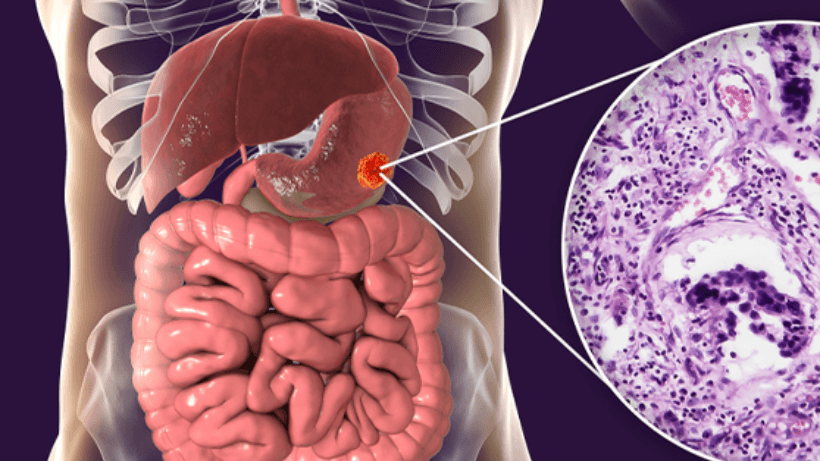
Unmasking Adenocarcinoma: The Silent Killer
30 Sep, 2024
 Healthtrip
HealthtripImagine a scenario where a person is living a normal life, unaware of the silent killer lurking within their body. They may be experiencing symptoms that seem trivial, but in reality, they are the warning signs of a deadly disease. This is the reality for many people diagnosed with adenocarcinoma, a type of cancer that can affect various organs in the body. It is a silent killer, often diagnosed at an advanced stage, making it crucial to raise awareness about this disease and its warning signs.
What is Adenocarcinoma?
Adenocarcinoma is a type of cancer that develops in the glands that produce mucus, hormones, or other bodily fluids. It can occur in various parts of the body, including the lungs, breasts, pancreas, colon, and prostate gland. The cancer cells in adenocarcinoma arise from the epithelial cells that line the glands and ducts in these organs. In most cases, adenocarcinoma grows slowly and may not exhibit any symptoms in its early stages, making it challenging to diagnose.
Most popular procedures in India
Symptoms of Adenocarcinoma
The symptoms of adenocarcinoma vary depending on the location and size of the tumor. In general, the symptoms may include fatigue, weight loss, and pain in the affected area. For example, people with lung adenocarcinoma may experience coughing, shortness of breath, and chest pain, while those with pancreatic adenocarcinoma may experience abdominal pain, nausea, and vomiting. In some cases, the symptoms may not appear until the cancer has spread to other parts of the body, making it essential to consult a doctor if any unusual symptoms persist.
In many cases, adenocarcinoma is diagnosed incidentally during a routine medical examination or when the patient presents with symptoms that are not specific to the disease. A diagnosis is typically made through a combination of imaging tests, such as computed tomography (CT) scans, magnetic resonance imaging (MRI) scans, and positron emission tomography (PET) scans, as well as biopsy and laboratory tests. Early detection and diagnosis are critical in improving treatment outcomes and increasing survival rates.
Wellness Treatments
Give yourself the time to relax
Lowest Prices Guaranteed!

Lowest Prices Guaranteed!
Risk Factors and Causes of Adenocarcinoma
While the exact causes of adenocarcinoma are not fully understood, several risk factors have been identified. These include smoking, family history, genetic mutations, and environmental factors such as exposure to carcinogens. For example, people who smoke are at a higher risk of developing lung adenocarcinoma, while those with a family history of breast cancer are at a higher risk of developing breast adenocarcinoma. Understanding these risk factors can help individuals take preventive measures and undergo regular screenings to detect the disease early.
Prevention and Screening
While there is no surefire way to prevent adenocarcinoma, there are steps individuals can take to reduce their risk. These include maintaining a healthy lifestyle, avoiding exposure to carcinogens, and undergoing regular screenings. For example, women can undergo regular mammograms to detect breast cancer, while men can undergo regular prostate-specific antigen (PSA) tests to detect prostate cancer. Additionally, people who are at a high risk of developing adenocarcinoma due to family history or genetic mutations can undergo genetic testing and counseling to understand their risk and take preventive measures.
Treatment options for adenocarcinoma vary depending on the location and stage of the cancer. These may include surgery, chemotherapy, radiation therapy, and targeted therapy. In some cases, a combination of these treatments may be used. Early detection and treatment are critical in improving survival rates and reducing the risk of recurrence.
Living with Adenocarcinoma
A diagnosis of adenocarcinoma can be overwhelming, but it is essential to remember that there are many resources available to support patients and their families. These include support groups, counseling services, and patient advocacy organizations. Additionally, patients can take steps to manage their symptoms and improve their quality of life, such as practicing stress-reducing techniques, maintaining a healthy diet, and engaging in regular exercise.
In conclusion, adenocarcinoma is a silent killer that can affect anyone, regardless of age, gender, or lifestyle. It is essential to raise awareness about this disease and its warning signs, as well as the importance of early detection and treatment. By understanding the risk factors and causes of adenocarcinoma, individuals can take preventive measures and undergo regular screenings to detect the disease early. With the right treatment and support, it is possible to manage adenocarcinoma and improve survival rates.
Related Blogs

Cancer's Dark Horse: Understanding Adenoid Cystic Carcinoma
Adenoid cystic carcinoma is a rare type of cancer that

Fortis Hospitals' Advanced Oncology Care
Fortis Hospitals is a leading healthcare provider in India, with

Getting Familiar with the Symptoms and Treatment of Adenocarcinoma
Overview If you've been diagnosed with adenocarcinoma, you have cancer in










